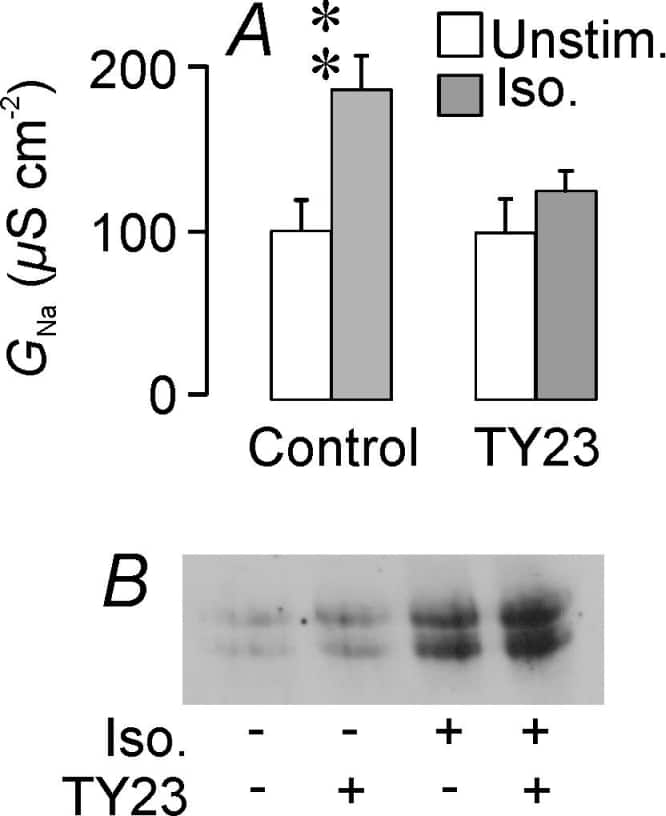Regulated Na+ absorption maintains a driving force for the continual absorption of fluid from the airspaces of neonatal and adult lungs, and this process is vital for proper lung function. Moreover, this transport of Na+ can be acutely regulated via β-adrenoceptors that allow control over the Na+ conductance of the apical membrane (GNa) (Collett et al., 2002) but the signalling pathways that mediate this response have not been fully defined. As β-adrenergic agonists are known to elevate intracellular cyclic adenosine monophosphate (cAMP) levels, it is often assumed that the increase in GNa must be mediated via protein kinase A. However there is evidence to suggest that the stimulation of Na+ transport involves a protein tyrosine kinase (PTK)-dependent pathway (Niisato et al., 1999). In the present study we have therefore explored the effects of the PTK inhibitor tyrphostin A23 (TY23) upon the adrenaline-evoked increase in GNa.Studies of basolaterally permeabilised cells confirmed (Collett et al., 2002) that isoprenaline normally increases GNa but this response was abolished by TY23 (Fig 1A). This finding thus accords with data presented by Niisato et al. (1999). Moreover, Western analysis of protein extracted from unstimulated and isoprenaline stimulated cells confirmed that this β-adrenoceptor agonist can increase the abundance of proteins containing phoshorylated tyrosine residues (Fig. 1B). However, this part of the response to isoprenaline was unaffected by TY23 and so the disrupted control over GNa (Fig 1A) cannot be attributed to an impairment of tyrosine phosphorylation.
University of Glasgow (2004) J Physiol 557P, PC45
Communications: Effects of tyrphostin A23 (TY23) upon the control of apical Na+ conductance (GNa) in isoprenaline-stimulated rat fetal distal lung epithelial (FDLE) cells
M.B. O’Shea, S.J. Ramminger, R.E. Olver and S.M. Wilson
Lung Membrane Transport Group, Division of Maternal and Child Health Sciences, University of Dundee, Dundee, Scotland, UK
View other abstracts by:
Fig 1. FDLE cells isolated from fetuses (gestational age 20 days) removed from anaesthetised (3% halothane, killed before regaining consciousness) rats, were plated onto permeable supports and incubated at adult alveolar PO2 in the presence of dexamethasone (200nM) and T3 (10nM). After 48h the resultant epithelial layers were mounted in Ussing Chambers so that Gcould be estimated in control and isoprenaline-stimulated cells by measuring the currents evoked by the imposition of an inwardly-directed Na+ gradient (see Collet et al., 2002). (A) Data from control and TY23treated (100 µM, 30 min) cells. (B) Western blot showing the effects of isoprenaline upon the abundance of phosphotyrosinecontaining proteins in control and TY23-treated cells.
Where applicable, experiments conform with Society ethical requirements.

